I have noticed a quirky thing. Let's say A and B are dataframe.
A is:
A
a b c
0 x 1 a
1 y 2 b
2 z 3 c
3 w 4 d
B is:
B
a b c
0 1 x a
1 2 y b
2 3 z c
3 4 w d
As we can see above, the elements under column a in A and B are different, but A.equals(B) yields True
A==B correctly shows that the elements are not equal:
A==B
a b c
0 False False True
1 False False True
2 False False True
3 False False True
Question: Can someone please explain why .equals() yields True? Also, I researched this topic on SO. As per contract of pandas.DataFrame.equals, Pandas must return False. I'd appreciate any help.
I am a beginner, so I'd appreciate any help.
Here's json format and ._data of A and B
A
`A.to_json()`
Out[114]: '{"a":{"0":"x","1":"y","2":"z","3":"w"},"b":{"0":1,"1":2,"2":3,"3":4},"c":{"0":"a","1":"b","2":"c","3":"d"}}'
and A._data is
BlockManager
Items: Index(['a', 'b', 'c'], dtype='object')
Axis 1: RangeIndex(start=0, stop=4, step=1)
IntBlock: slice(1, 2, 1), 1 x 4, dtype: int64
ObjectBlock: slice(0, 4, 2), 2 x 4, dtype: object
B
B's json format:
B.to_json()
'{"a":{"0":1,"1":2,"2":3,"3":4},"b":{"0":"x","1":"y","2":"z","3":"w"},"c":{"0":"a","1":"b","2":"c","3":"d"}}'
B._data
BlockManager
Items: Index(['a', 'b', 'c'], dtype='object')
Axis 1: RangeIndex(start=0, stop=4, step=1)
IntBlock: slice(0, 1, 1), 1 x 4, dtype: int64
ObjectBlock: slice(1, 3, 1), 2 x 4, dtype: object
